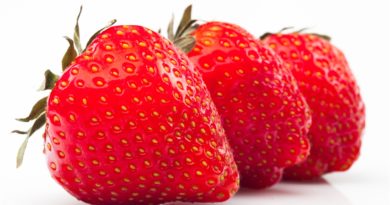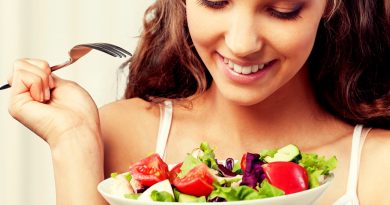5 Tricks to Get the Most Nutrients From Your Food
Should we drink the juice as soon as it is squeezed? Is it better to use the tomatoes in a sauce? In this article, you will discover some tricks that allow you to take advantage of the nutrients in your food.
1. Eat avocados cold
The pantothenic acid (or vitamin B5) it contains helps to ward off anxiety. That is why it is known as the "anti-stress vitamin".
But… keep in mind that this vitamin is destroyed by heat.
Therefore, if you want to take advantage of this property, remember to always use the avocado in cold dishes.
2. Opt for tomato sauces
In its raw form, you can take advantage of its vitamins and minerals (B, C, A and E, potassium, phosphorus, magnesium). But nevertheless…
The lycopene is absorbed with triple the efficiency after the heat has broken the cell membranes and allowed their exit.
Therefore, the most abundant sources of lycopene are natural tomato sauces and, above all, stir-fries. And its antioxidant effect multiplies if you use a good virgin olive oil and add onions and garlic!
3. Grind the garlic and let it "breathe"
By crushing the raw garlic, aliin is formed, which, in contact with oxygen, is transformed into allicin and ajoene, two of the main medicinal components of this food.
When preparing a hot sauce with garlic, grind the garlic in a mortar before preparing it and let them rest for 10 minutes in the air.
4. Yes, you have to drink the juice quickly!
Taking it whole allows you to benefit from flavonoids, which concentrate on white skin.
But if you take it in juice form, it is better to drink it freshly squeezed because vitamin C oxidizes quickly: at 15-20 minutes of squeezing the pulp.
It is better to make the juice at home with organic fruit and drink it right away to preserve its vitamin C.
5. Cabbages: add vinegar when cooked
The cooking deactivates a part of its beneficial molecules: after 5 minutes of boiling, 20% of them have been lost and at 10 minutes 40%.
To avoid this, choose other cooking methods: sautéing, papillote and, above all, steaming, which best maintains the vitamins present in cabbages (C, A, group B…).
But if you boil them, add salt and vinegar or lemon and you will reduce the losses.
Small gestures that make a difference
It is very likely that you are making some mistakes that are not allowing you to get all the benefits of food. Take note of how you can preserve your nutrients to the maximum to act as true health pills.
In order not to destroy the nutrients:
The nutrients are highly unstable and can be "deactivated" or "lost" by the action of light, heat, when cutting a food or manipulating it in a certain way…
- Protects the endives from the sun. They are rich in folic acid but this nutrient is photosensitive, so it is best to protect them from light as much as possible. Once clean, wrap them in paper towels or a cotton cloth.
- The parsley add it at the end. It has three times more vitamin C than an orange, but you must add it at the last moment because the heat destroys it.
- Potatoes, unpeeled. When eaten with the skin, a medium sized potato contributes half of the recommended daily amount of calcium.
- Green beans: wait for the water to boil. If you immerse them for a long time, they lose many of their vitamins: it is better put them in the water when it is already boiling to better preserve their nutrients.
- Peas, leave them in their pod. Fresh peas are real pearls of health but if you take them out of their pods and guards… they begin to lose nutrients!
Strengthen the qualities
The opposite also occurs, some preparations enhance the action of nutrients or improve their digestibility. Knowing these other culinary tricks will allow you to multiply the beneficial effects of food on your body. For example:
- Do not discard the seeds of the grapes. If you take them to regulate the functioning of the intestine, it is essential that you do not discard these parts, since they are what promote intestinal activity.
- Chestnuts, better soaked. Peel them well if you are going to eat them raw (you will take advantage of their vitamin C), but remove the yellow skin that covers them (it is indigestible) and let them soak for 8 hours to make them more digestible
- Carrot: cook it whole. Research from the University of Newcastle (United Kingdom) showed that if they are cooked whole and then chopped, they preserve 25% more of falcarinol-a powerful antioxidant-and are more nutritious.
- Pomegranate, drink your juice. The tannins of this fruit, substances with astringent and anti-inflammatory properties, are present mainly in the whitish membranes that separate the grains. To benefit from its virtues, it is better to drink it in juice.
- Watermelon. Its white pulp is rich in citrulline, an amino acid that is also contained in cucumbers and melons and that regulates the tension. In 200 g of watermelon there are about 400 mg of this substance (60% in the shell and 40% in the interior).




